A story of showing up in Arusha and climbing Mount Kilimanjaro on a 5-day trek with no preparation from the trip The Great Eastern Summer.
Climbing Mount Kilimanjaro is no joke and thinking that it was a walk in the park (literally) was quite foolish. At 5,895 m, Kilimanjaro is the highest mountain in Africa making it one of the Seven Summits as well as the highest free standing mountain in the world. With poor preparation, no training, and some unexpected circumstances, I was very close to death at the summit.
To start things off right, my friend Bill and I planned way in advance for the climb. And by “in advance”, I mean we were on the phones and booked a tour at 9 p.m. the night before.
Day 1
After breakfast, we met Robert, the manager of the tour company, Nature Beauties at 8 a.m. He and a driver took us to their office in downtown Arusha to go over the details of the tour and get some supplies.
After a short drive in a safari Land Cruiser, we arrived at his office. We sat in the small office where two desks were awkwardly squeezed into the room. Robert gave us a rundown of the itinerary. He explained that normally the tour is minimum six days so you have time to acclimate to the altitude, but obviously we didn’t have time for that. Our schedule only allowed for five days.
We made our payment and he printed out our receipts.
He asked us what supplies we brought. We blankly stared back at him.
We met Laurent, our main guide, who handed us two sleeping bags and large sacks which contained a mix of jackets, gloves, and pants. We dug through the clothing and each picked out something for the trip. At the time, the purple windbreaker seemed like a good idea.
From the office we walked over to the bus station to catch a minibus to Moshi. A crew assembled at the station bringing food and supplies for the trip. We met the assistant guide Fula and one of the porters.
As our bus was about to leave the station we noticed another white guy come aboard. He happened to sit next to us. Conversation started and we found out his name was Dor, from Israel, and he was looking for a group to join for the hike. It seems we weren’t the only ones planning this last minute.
We welcomed Dor to join us on our tour.
From the chaotic Moshi station, we had an arranged taxi van to take us to the base of the mountain.
At the gate of the park, our guide got out to register our car to go in the parking. Laurent had to check if the camp had room for us as we were so last minute and we waited for the porters to arrive and get the supplies together. Based on what everyone else was wearing, we decided to go buy some hats. Bill also rented a backpack to replace his beach bag.
The wait turned into four hours, but we got the OK to enter, so at the small headquarters, we registered our names with our passports.
Almost 4 p.m. we passed through Marangu Gate, officially starting our trek at an altitude of 1843 m (6,046 ft). The Marangu Route is the most common route and the only one in which you don’t need a tent.
The first part of the trail was an easy three hour hike through lush rain forests where monkeys passed overhead to the sounds of waterfalls in the background.
We made one stop for lunch which consisted of a piece of fried chicken, small sandwich, banana, cake, and mango juice.
It started getting dark especially under the tree cover of the forest, which was a bit worrying as we didn’t have headlamps. Luckily we made it just as it was getting too dark to see, completing the hike in under four hours.
The campsite, Mandara Hut, stands at 2,700 m (8,858 ft) high.
After we registered, Laurent showed us our cabin, where a group of Russian tourists were eating on the terrace. Our greeting went unnoticed. Later we met the Dutch family staying in our eight bed cabin.
To pass the time before dinner, we played poker.
Dinner was served at 9:30 p.m. A soup, a main, and fruit followed by tea and coffee made up the meal which we devoured in a hurry.
After another poker game we went to bed.
Day 2
By 7:30 a.m. everyone was rushing to get ready and back on the trail.
Our cook brought us bowls of hot water to wash with. Then we had a quick breakfast of eggs, tomatoes, and a type of pancake which we spread copious amounts of peanut butter and honey on. After we finished our coffee, we were off.
Today’s hike was the longest segment between campsites, covering 12 km (7 miles).
The trail was quite scenic going through the forest, grasslands and eventually into the clouds. Walking through seemed like we were in fog, but once we ascended higher, we were treated to an awesome view over the blanket of clouds.
Above the clouds there was noticeably less life, besides these massive ravens and peculiar vegetation.
We made a few stops for water breaks and one thirty minute break for lunch. The contents of the lunchbox were the same as the first day.
Passing several groups on the way, we made good time and arrived at Horombo Hut at 3,720 m (12,205 ft) around 4 p.m.
We registered at the camp office which also had solar powered electrical outlets where we could charge our batteries for a fee.
Our small cabin had four beds and fortunately we had it to ourselves.
We explored the campsite and surrounding hills before dinner, but the altitude was already affecting us.
After dinner, we quickly went to sleep.
Day 3
Awoken by a familiar knock on the door, our cook informed us that breakfast was ready. After our wash and breakfast, we packed our bags and left the other climbers who would spend an extra day to acclimate to the altitude.
The 10 km (6 mile) hike was difficult due to the elevation. I brought a few tablets of Diamox for the altitude sickness, which we rationed for the rest of the trip.
The environment changed from grasslands to a barren rocky desert.
The ascent eventually leveled out and rocky gravel turned into sand. On the side of the path, climbers spelled out words and created symbols using the rocks.
The wind really picked up and we had to bundle up.
When we stopped for lunch it was still very windy and cold, so we tried to take shelter behind some rocks. The massive ravens hopped around trying to eat any leftovers blown away.
After the meal we continued the last stretch to the top. At this point I was really feeling the altitude and had to take frequent breaks.
We made it to Kibo Hut at 4,703 m (15,430 ft) while it was still early afternoon.
The large room we were allocated had about 12 people spread out on bunk beds. We tried to relax a bit before dinner and the cook brought in some hot tea and popcorn for us to snack on.
Laurent told us to rest of a few hours, then we would start our midnight climb to summit at sunrise.
The idea sounded good, but in reality it meant we would climb the hardest part of the trial all night after we just hiked the longest segment during the day.
A couple of hours later, the cook advised that dinner was ready and we dragged ourselves to the cold dining room. Though I didn’t have much of an appetite I forced myself to eat for the energy. We were served a curious meat dish for the first time and I decided to indulge, while Bill and Dor avoided it. The minced meat had a bit of a rancid taste, but I ate a good portion of it.
It was difficult to get any sleep. People were coming in and out of the room, the temperature was way too low for comfort and the altitude made our heads spin.
Before we knew it, 11:30 p.m. struck and it was time to tackle the mountain.
Exhausted, cold, and nauseous, I was in no shape to climb a mountain.
Bill and I each ate an altitude sickness pill. There was only one left.
Fully geared up, I wore two t-shirts, a hoodie, a windbreaker, jeans, ski pants that were a bit too small, gloves, a hat (which I covered with my hoodie), and hiking shoes. I was freezing.
My neck was exposed, so I took a hat I found in the first cabin and borrowed Dor’s knife. I cut the end off the top and put it on the makeshift neck-warmer.
We assembled outside the hut. I had this incredible feeling of excitement mixed with dread. And we were off.
The groups left at different times so the view up the mountain looked like a windy segmented string of lights.
Laurent turned to us. “Do you have headlamps?”
“Uh, no? No one said we needed to bring them.”
“Okay, we’ll use the moonlight.”
Luckily it was near a full moon and we could see fairly clearly.
Laurent led the group while Fula closed the line. The terrain was mostly small pebbles and sand making it very difficult to climb. It was like walking up a sand dune. Our walking sticks actually were essential for this part, allowing us to hold our footing better and waste less energy on each step.
Right at the start, we saw a man being escorted down the mountain with an oxygen mask on his face. Laurent advised that we didn’t have any emergency oxygen… great.
We continued our steady pace and made our way up a third of the mountain until my nausea turned into something much worse, diarrhea.
I stopped the group and as I was explaining that I needed to find a rock to crouch behind, I suddenly had a violent bout of vomiting. I heaved again and again.
Somewhere in that mess of my dinner and lunch was my essential altitude sickness pill.
Not good.
Scampering over some boulders, I made my way to an isolated area with the cover of a large rock. As I painfully squat there glazing down the moonlit mountain, I thought “this is the most beautiful place you’ve ever defecated!”
Rejoining the group, Bill warned me to drink plenty of water or I would be extremely dehydrated. I popped the reserve altitude sickness pill and chugged some water. Of course this caused me to immediately vomit it all out.
So there I was with no altitude medication and a case of serious nausea and diarrhea, due to either food poisoning or not acclimating to the altitude.
Getting back into the hike, I kept up at first but then started to lag. Laurent noticed and asked me to give my backpack to Fula. When I refused, he demanded I follow his order or we could go back down the mountain. I relented.
We continued up the mountain. Looking up was extremely disheartening because you saw the impossible height you still had to go, accented by the headlamp dots of the groups ahead.
The cold and exhaustion was getting to me. I was so tired that between each step up the mountain, I would close my eyes to sneak a quick nap. This caused me to bump into the person ahead of me several times.
We made it to a cave, which seemed to be a regular stop. One group was discussing whether certain members should go back down. We had a few minutes to sit down and sip some water out of the cold wind. I noticed the water in our bottles was turning into ice.
Back on the hike, Fula wasn’t walking straight and was taking long breaks. Laurent went to talk to him and after chatting a bit, he took my bag on his back and continued to lead the group. I thought Fula was taking a break, but apparently he went back down the mountain.
You know it’s tough when one of your guides turns back. Now we were four.
We continued and somehow I managed to keep up. I was completely out of breath and breathing heavily. Focused on the hiker’s feet in front of me, I repeated the phrase my Lares Trek guide in Peru once told me.
Your mind is weak, but your body is strong.
Step.
Your mind is weak, but your body is strong.
Step.
Your mind is weak, but your body is strong.
Step.
Eventually we made it to the halfway point, where we rested. It was difficult to regroup and continue, but Laurent prodding us along.
The rest of the climb was a blur. Slow and steady, we made it to the rocky area right before the top. The boulders were quite large and we had to physically climb up. The loose sand and gravel on the rock face made it very slippery and a fall from there would be devastating.
We summited just as the sun was rising. A scenic orange glow welcomed us.
On the mountain a green sign read “Congratulations! You are now at Stella Point Alt. 5739M.”
The highest point of the mountain was still across the crater, another 45 minutes of hiking. Looking at the peak in the distance and knowing that I had completely expended all my energy, a sad realization popped into my mind. I may not be able to summit.
We sat at Stella Point for awhile, trying to regain some energy. Then our group continued forward. We walked along the circular path of the crater. I tried to keep up but was hitting a wall. I had to take a break every few steps and lean on my poles to take some weight off my legs.
I was shivering badly as my core temperature must have been extremely low and I told Laurent that I needed to get into the sunlight to warm up.
Laurent convinced me to keep moving forward with a promise of a good resting point in the sun up ahead. On the trail I would sit at every sunny spot I found, only to have Laurent get me back up to reach the resting spot just around the bend.
Dor was in good shape and disappeared up ahead. Bill and I were lagging behind with Laurent.
We exerted ourselves to get to the next “sunny area” where we parked ourselves and couldn’t get up. Laurent either gave up on pushing us forward, or felt that we needed a break.
I tried to warm up by exposing my skin directly to the sunlight. Even with the sun it was still windy and cold. As I sat there I noticed black blotches in my eyesight and my hearing sounded hollow. I took deep breaths gasping for air but still felt like I couldn’t breathe. Then I closed my eyes.
The darkness was a respite and escape. Though I was physically in an awful state, sitting there with my eyes closed was so comfortable and relaxing. Almost immediately I slipped into a deep sleep.
All of a sudden, I awoke to Laurent shaking me by the arms. “YOU CAN’T SLEEP HERE!” he yelled.
I felt like Tom Hanks in the opening scene of Saving Private Ryan when a shell exploded right next to him. My ears were ringing and everything was in slow motion. I looked over to my right and I saw Bill, a few feet away, laying like a wounded soldier. I looked back at Laurent who glared at me with the concern of a squad leader.
He then took my windbreaker off, dressed me in his warm jacket and then covered me with my windbreaker. I had no energy to refuse.
Bill started toward the summit and I eventually got up. Laurent stuck with me.
Though the remaining distance was probably a ten minute walk, I was having a lot of difficulty. With each step, I would need to stop and regroup before gaining enough energy for the next step.
I couldn’t believe that I wasn’t physically able to walk. I was frustrated and mad at myself. Each step was a challenge and took a lot of will power. At one point I was so annoyed that I convinced myself that it was just my mind holding me back and then took several large fast steps. I was immediately out of energy. Laurent warned me to take it easy, “pole pole”.
Climbers heading down from the summit would pass and shout words of encouragement like “almost there!” or greet me with “jambo”. I didn’t even have the energy to respond and could only offer a weak nod.
An energetic lady comforted me with a pat on the back and said that it was just a bit further, but when she looked at my face, she changed her message to “it’s not worth dying for.” I acknowledged her comment with an attempted smile and took another step forward.
I was so close yet so far. The thought of giving up danced in my mind throughout the hike, but I couldn’t come to Kilimanjaro and not summit. Plus, if Bill made it and I didn’t, I would never hear the end of it. I would be the butt of his jokes for the rest of my life. I’d sooner die trying than live a life of ridicule.
Laurent was very patient and walked alongside me. When I collapsed on my walking sticks, he would help prop me up. When I ran out of water and he refilled my bottle from a passing guide.
We walked by a group trying to resuscitate a man who was sprawled out on the path completely unconscious.
Possibly 45 minutes later, step by step, I managed to rejoin the group.
I finally made it to Uhuru Peak, the summit of Mount Kilimanjaro at 5,895 m (19,341 ft).
I amassed enough energy to take my jackets off to reveal my Kilimanjaro tourist shirt and take a photo at the summit. Then I returned to a sitting position as others took pictures. I was so weak, I couldn’t even lift my camera, so I asked Bill to photograph the event.
Though frustrated I couldn’t enjoy the summit, I was glad I made it. But now all I wanted was to go back down the mountain so I could breathe.
The combination of the temperature increasing, the rest we took, and the high of the accomplishment, I had a renewed energy that allowed me to walk most of the path around the crater. We made it back to Stella Point and started our descent.
Though it was downhill, the loose gravel terrain was still difficult to traverse.
Dor and Laurent were up front and Bill and I lagged behind. We would catch up with them, but eventually we told them to just go ahead without us.
Our descent was very slow. After a brief walk, we would sit to rest and drink some water. We would often fall asleep on these rests and wake up a couple of minutes later. Our bodies were doing everything to regain energy. As we slide down the gravel, my shoes got packed with sand and pebbles.
Towards the end, we both ran out if water so we had to hurry.
The descent that should take an hour, took us close to three.
Back at Kimbo Hut, we found the Dutch group from our first night had arrived and actually were assigned our beds. They kindly offered it for us to rest, but we said they needed it more than we did.
We sat in the dining area and drank water and juice. The cook eventually served dinner but I had no appetite. Instead I put my head down and passed out on the table.
When we had to walk down to the next campsite, I asked Laurent if I could take the emergency cart back down. He went to get the camp administrator. The guy came and asked what was wrong, I explained that I think I got food poisoning and didn’t have the energy to hike another four hours.
A team of four prepared the cart by loading my bags onto it. They strapped me in and used my backpack as a pillow.
Then they wheeled me down the path. Laurent accompanied us.
I passed out almost immediately and I woke up to the unpleasant calling of my diarrhea. Fortunately we were near a toilet and they pulled over.
The rocky area of the route was difficult to navigate with the cart. Two of the porters slipped and fell, while some of the rocks we rode over were so big that they hit my back through the bottom of the cart.
We arrived at Horombo Hut. I thanked and tipped the porters then registered and waited in our cabin.
Bill and Dor soon arrived. With no guide, they followed the tire tracks of my cart to find the way.
We all went straight to our cabin and passed out.
Besides a quick dinner, which Bill skipped because he was also feeling nauseous, we slept the whole night through.
Day 5
The next morning we were somewhat refreshed and after breakfast, headed down the mountain.
The walk down was fine. We took it easy and admired the scenery and wildlife as the environment transformed back to a forest.
Back at Mandara Hut, we sat together and had the last meal on the mountain.
Still dazed from the entire experience, we recounted the situations of the climb. We also met and chatted with other hikers on the way down including a Texan doctor who works at a mission in Uganda.
At Marangu Gate, we registered our exit and went to main office to receive our certificates for successfully summiting Kilimanjaro.
We took care of tips for the team, then loaded into a van for a transfer back to Moshi where we caught a bus to Arusha.
Robert picked us up when we got back to town so we could get our bags and return the gear we borrowed. We reached an agreement on a tour package for the Serengeti, leaving tomorrow.
We thanked Laurent and Robert when they dropped us off at our hotel. I was especially grateful to Laurent, because without his guidance, I may not have been able to summit.
Looking back, I can easily understand how people freeze to death on the mountain. It’s just so comfortable to close your eyes and drift to sleep. If Laurent didn’t wake us up, maybe we would have just slipped away and died on Kilimanjaro.
But the death rate is low with an estimated 3-7 deaths for over 35,000 climbers per year. The Marangu Route has one of the lowest success rates on the mountain partly due to the fact that inexperienced climbers pick this route expecting it to be easy. Summiting in 5 days has the lowest success rate at 27%.
With such poor preparation and circumstances, I’m glad our group made it to the top with a success rate of 80%!
Climbing Mount Kilimanjaro is the most difficult physical challenge I’ve ever undertaken and it is not to be underestimated. However, the thrill of summiting and looking down at the sea of clouds from the roof of Africa is a life-changing experience.
Next up, the Safari in Tanzania.
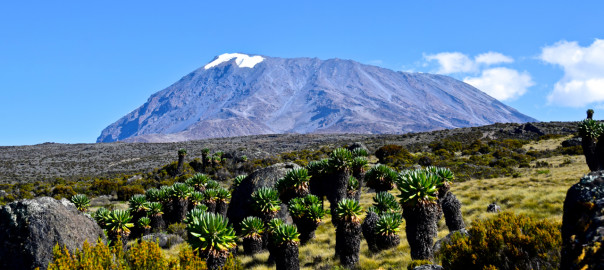
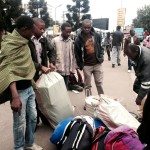
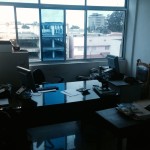
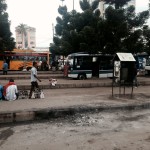
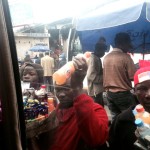
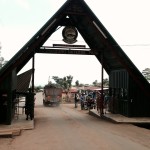
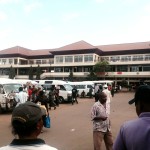
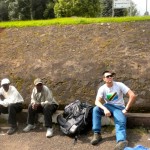
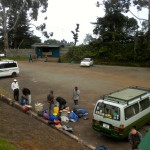
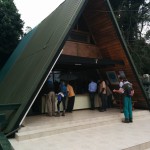
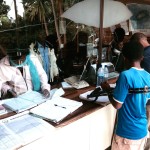
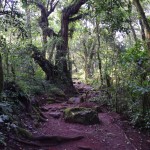
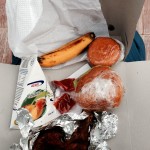
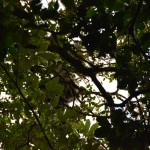
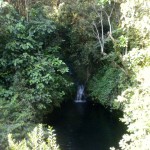
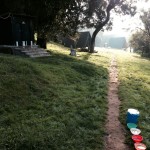
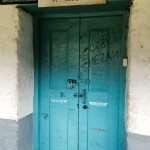
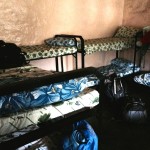
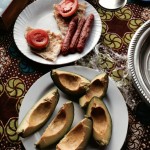
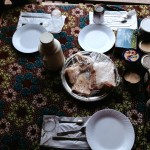
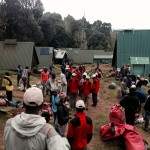
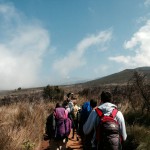
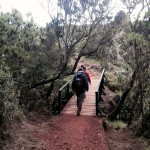
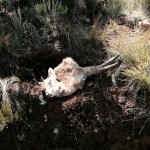
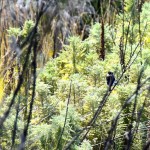
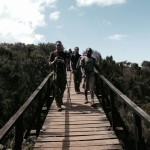
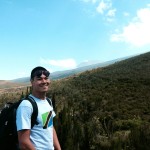
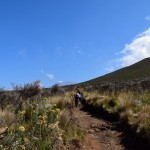
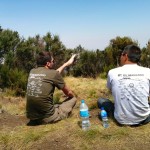
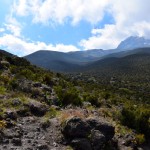
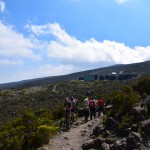
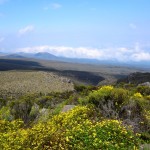
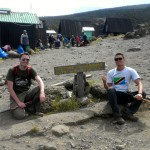
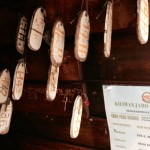
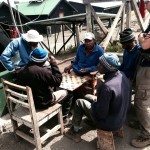
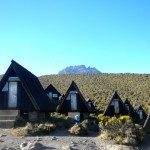
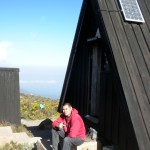
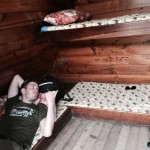
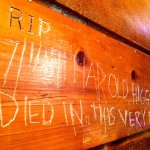
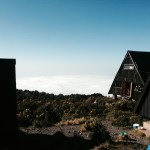
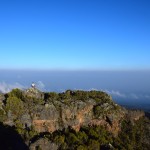
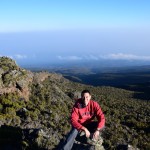
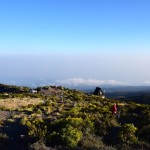
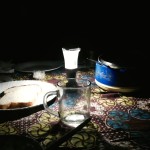
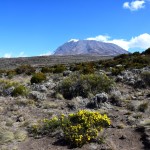
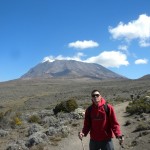
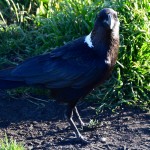
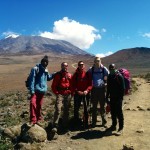
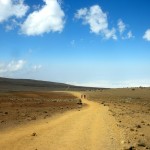
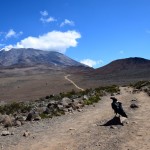
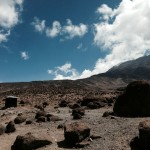
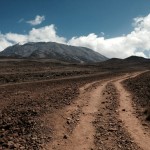
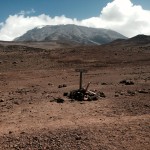
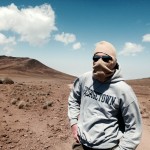
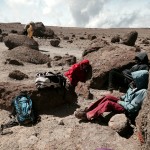
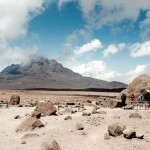
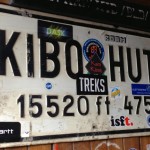
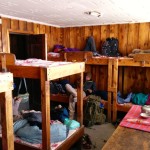
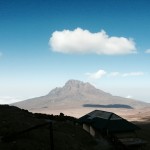
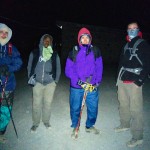
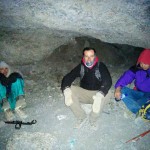
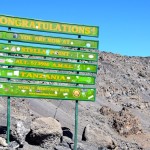
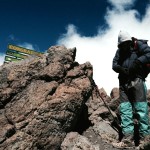
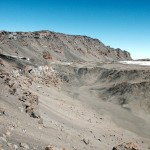
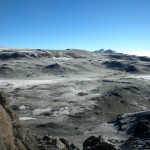
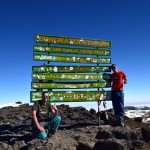
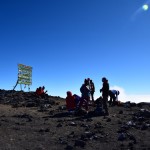
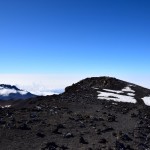
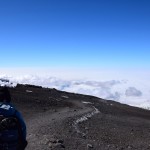
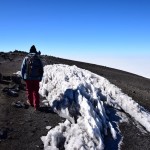
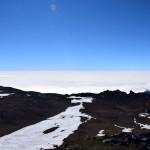
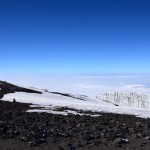
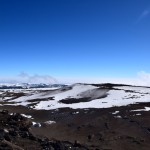
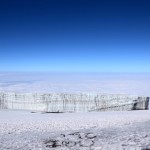
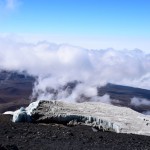
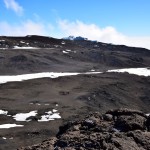
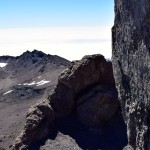
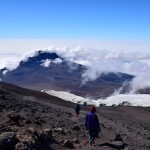
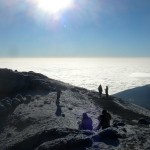
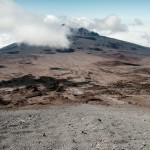
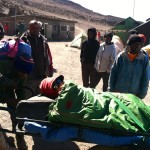
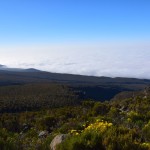
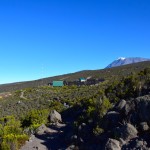
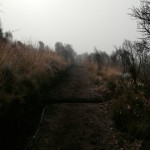
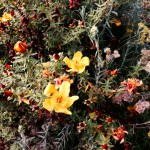
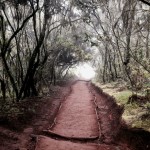
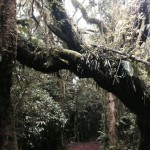
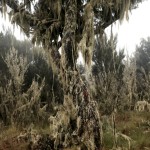
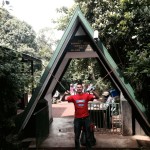
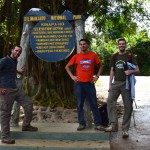
Pingback: Nairobi the Capital of Kenya | World-Adventurer()
Pingback: Djibouti the Strategic State | World-Adventurer()
Pingback: Why I'm Changing my Blog Format | World-Adventurer()
Pingback: Climbing Mount Cameroon | World-Adventurer()